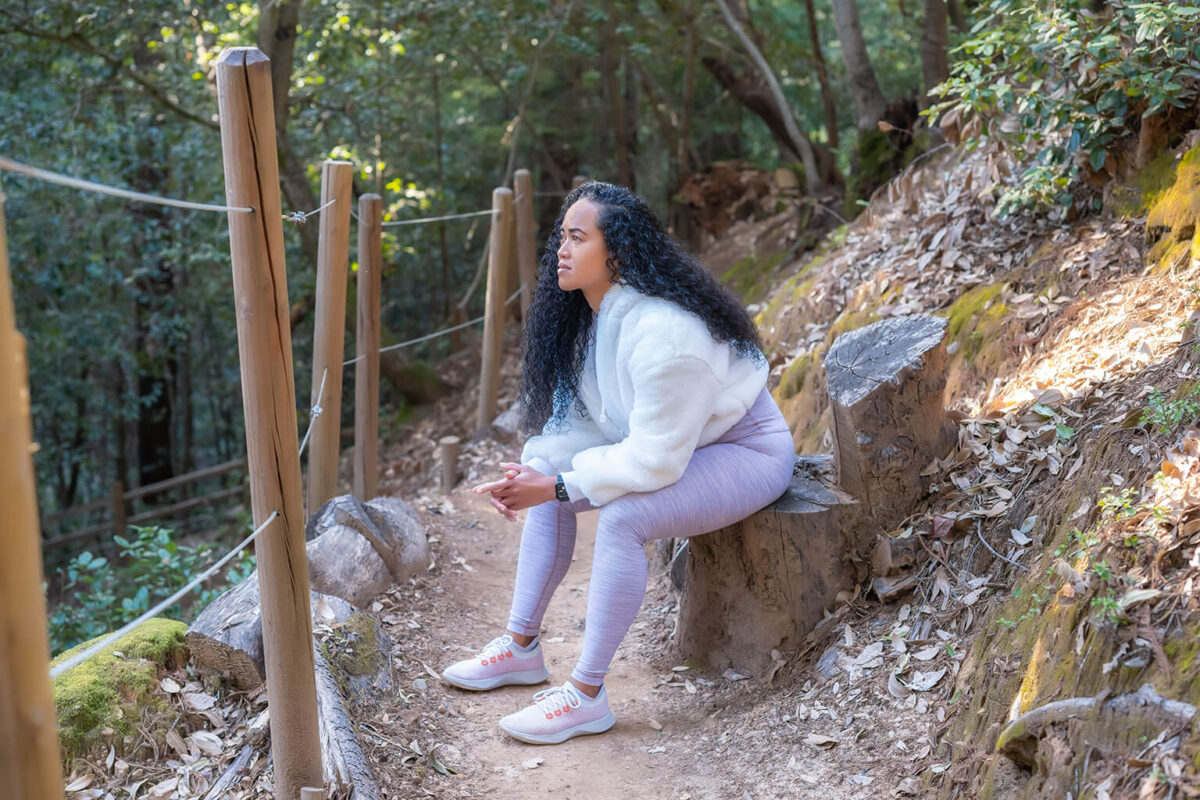Words by Sheri Baer
“Shinrin-Yoku,” the description in the retreat schedule reads. “Bathe in the forest with all of your senses.”
Canyon Ranch Woodside, the wellness retreat tucked into 16 woodsy acres off Skyline Boulevard, offers a variety of fitness, renewal and self-care activities—and during a recent stay, this particular session catches my eye. For the novice forest bather, let it be known that water isn’t required.
“Shinrin-yoku directly translates to ‘forest bathing,’ and it is a funny term when you think of it,” remarks senior outdoor sports guide Tim Murray. “Often, people will come and say, ‘I brought my bathing suit,’ and I like that people are still willing to go for it. We had two guests just this weekend say, ‘Yeah, we’re ready to go into the waterfall.’”
According to Tim, the term shinrin-yoku was coined back in the 1980s, when Japan’s agricultural department studied the role of nature in offsetting the negative impact of industrialization. Too much pressure, stress, over-stimulation? Consider the eco-antidote of forest bathing. “It’s immersing yourself in nature,” explains Tim. “It’s letting it completely wash over you and envelop you like water.” Tim credits a fellow guide with summarizing the concept this way: “It’s a mix of being Henry David Thoreau and a four-year-old child.”
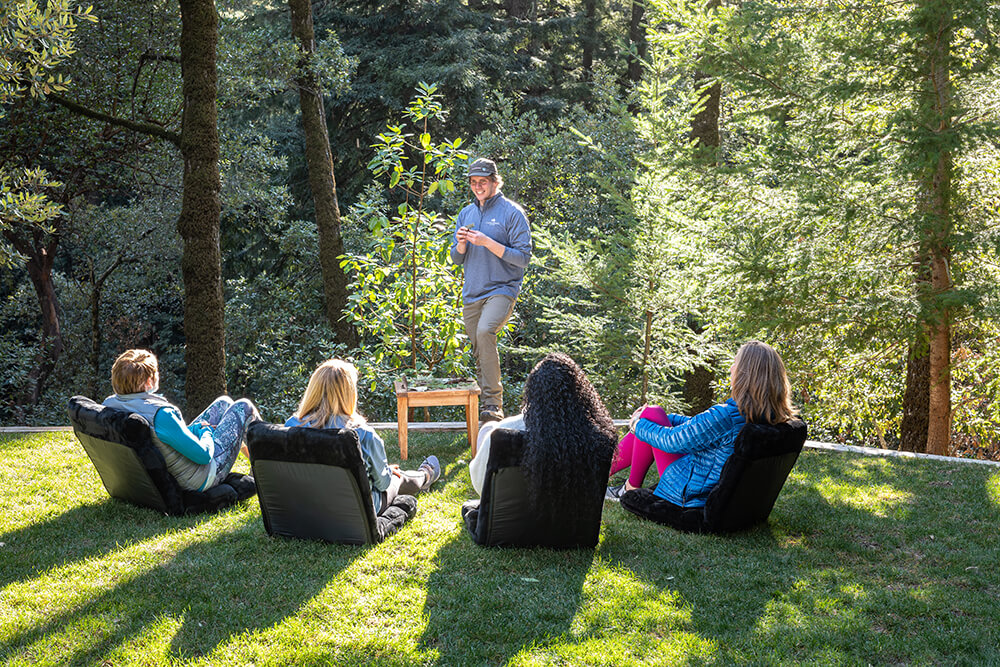
The idea that being outdoors is good for you sounds pretty obvious, so it’s not surprising that associated physical and mental health benefits range from reduced anxiety and blood pressure to increased immunity, energy and focus. Also on the plus side, there’s no prescribed formula or one way to do this and no required gear. If anything, it’s the opposite. To minimize distractions, turn off your phone—or leave it behind.
“I want you to be as present as possible,” Tim emphasizes as he greets our small group seeking shinrin-yoku enlightenment. Our starting point is a trailhead, so he clarifies how shinrin-yoku differs from hiking/physical exercise, where there’s a set destination and a focus on pushing forward.
“Hiking provides some of the benefits of nature, but it’s not going to be the full volume,” notes Tim. “You’re not really opening up all of your senses.”
How do you shift your mindset to fully see, smell, hear, taste and feel? Tim gathers us around a display table for a warm-up of sorts, a little show-and-tell to help jumpstart awareness. He plucks a heart-shaped leaf off a sprig of green. “This is redwood sorrel,” he tells us, before popping it into his mouth. Reassured by his robust chewing, we follow suit and discern a tangy, lemony flavor.
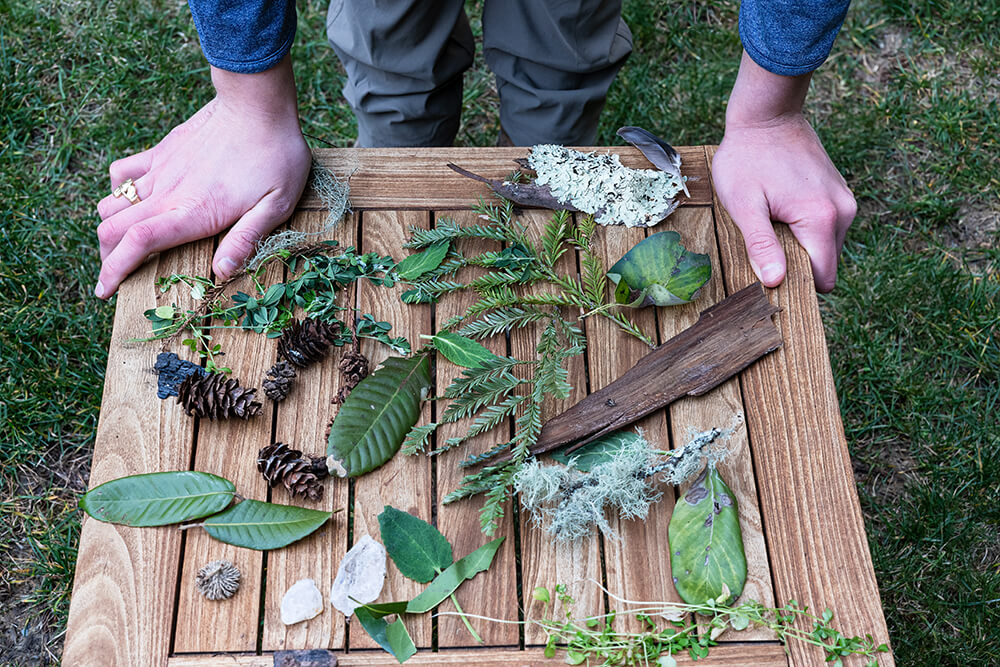
Next, Tim passes around a bay laurel leaf, and we take turns sniffing its pungent, peppery aroma. We compare how scratchy green lichen feels against a chunk of dense redwood bark. And we activate our ears by closing our eyes and sitting silently for a few minutes. “Tune in to the sounds around you,” guides Tim, “and start to hone in on the presence you want to bring into nature.” As I listen to a playful mix of bird song and rustling leaves, the top of my head starts to heat, and I know the sun has emerged from behind a cloud.
When it’s time to venture out, Tim directs us to follow the path of switchbacks to the forest floor. “Just go at your own pace, stop with things, study them. Look above you, feel the light, take in what’s going on around you,” he suggests. “If any thoughts of the outside world start to trickle in, try to release them and remember that this is the time for you to be out in nature.”
As my sneakers hit the trail, I reflexively start bounding down it. One foot, then the next, then the next—before stopping and catching myself. Why am I doing the same thing I always do? That’s not the point. I mindfully shift into s-l-o-o-o-w gear.
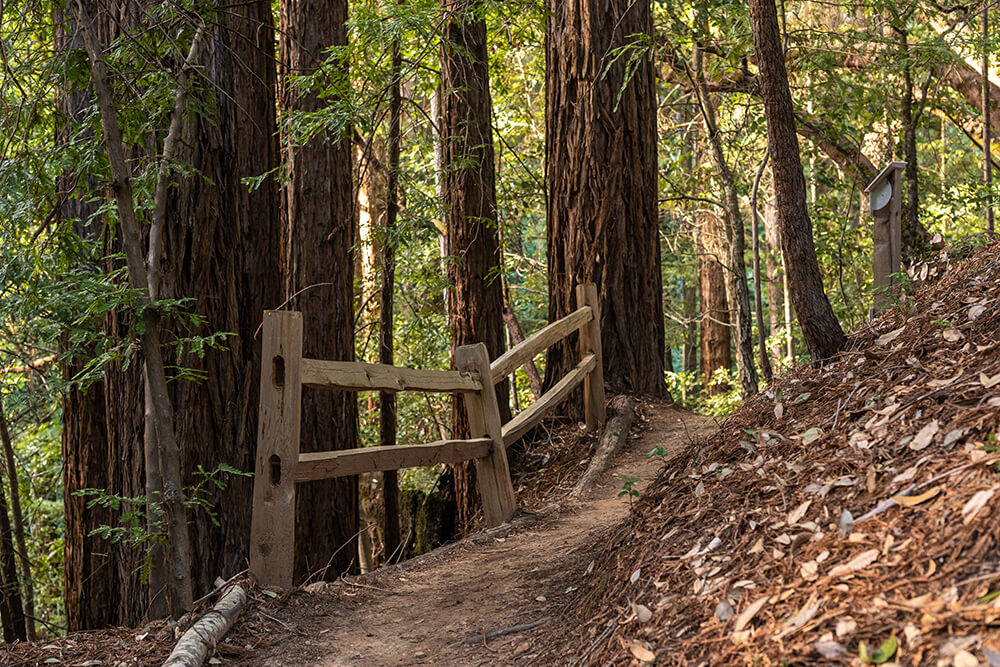
And everything shifts. I hear a woodpecker tap-tap-tapping on a tree and a creek burbling in the distance. I notice the way madrone trees stretch toward the sun and I pause to examine a cluster of mushrooms that look like a miniature fairy village. A redwood stump reveals a myriad of textures and tiny insects. I breathe in deeply, pondering the source of a sweet, musky scent. I feel how moss clings to a tree like carpet and can’t resist a zesty nibble of redwood sorrel when I spot a cluster. Indeed, as each step reveals new wonders, I find myself channeling my inner naturalist and preschooler.
Time slips away—along with the ever-persistent mind chatter of my overworked brain. When we eventually regroup, Tim asks if we’d like to share any thoughts or reflections. “I really don’t slow down and do this ever,” Molly confides. “It reminded me of my childhood—and what it felt like to be light and unburdened.” Nodding, I flash on a memory: sitting in my front yard, blissfully searching for four-leaf clovers for hours and hours.
Siu chimes in. “When I hike, I often have my headphones on and I’m just ‘go, go, go,’” she shares. Lisa smiles in agreement. “It was so refreshing to focus on the journey,” she adds, “versus just getting from Point A to Point B.”
As we begin to wrap up, Tim underscores that nature surrounds us on the Peninsula—and that you can even practice shinrin-yoku in a neighborhood park or your own backyard. “Most of the U.S. and even a lot of other countries have nowhere near the diversity of wildlife and nature that we have—all within a short walk or drive,” he reminds us. “Wherever you are, it’s about being in the moment as much as possible.”
And if you do happen to see a waterfall? “Get wet if you want to,” he grins. “It can be an aspect of forest bathing but it doesn’t have to be.”
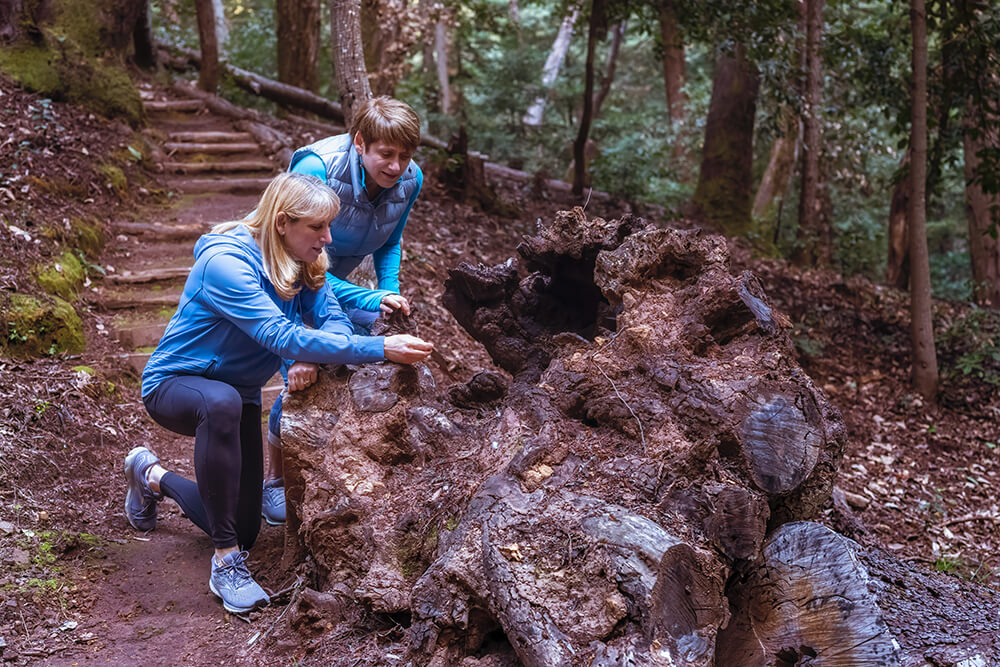
Tim’s Shinrin-yoku Tips
+ Find any place with nature. It can be a garden, trail or local
park, but be sure it’s a place you can linger without intrusion.
+ Take time away from technology. Leave your smart devices
behind or at least turn off your alerts and notifications.
+ Give yourself permission to be present in nature without
worrying about obligations or completing a task.
+ Bring water (and a day pack if you’re planning a trip longer
than a few hours).
+ Once in nature, close your eyes and take a deep breath.
Listen, smell and feel what’s around you. (Finding a place
to sit is recommended.)
+ Move slowly and pick up on whatever sparks your
curiosity along the way. Don’t be afraid to linger.
+ Be easy on yourself and don’t overthink it. Practicing
shinrin-yoku is a wonderful step towards mindfulness
and self-care.


